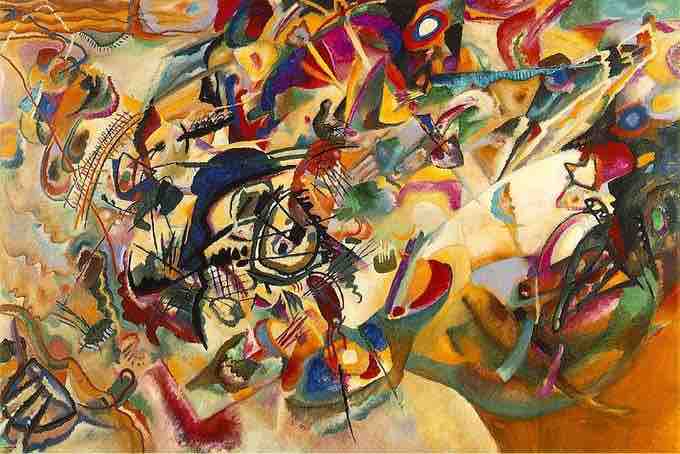Nonrepresentational art refers to compositions which do not rely on representation or mimesis to any extent. Abstract art, nonfigurative art, nonobjective art, and nonrepresentational art are related terms that indicate a departure from reality in the depiction of imagery in art. Meaning in nonrepresentational art is highly subjective and can be difficult to define. We can focus on the elements of the artwork (form, shape, line, color, space, and texture) in terms of the aesthetic value of the work, but the meaning will always be personal to the viewer unless the artist has made a statement about his or her intentions.
Generally, we can look at nonrepresentational art as the personal expression of an artist's subjective experience. Certain movements have described their intentions as an aim to evoke moods or emotions in the viewer. A good example are the expressionists of the early 20th century, who aimed to present the world solely from a subjective perspective, distorting it radically for emotional effect.
Nonrepresentational art has often been explored by artists as a means to spiritual expression. Wassily Kandinsky, a Russian painter, printmaker, and art theorist, is one of the most famous 20th century artists and is generally considered the first important painter of modern abstract art. As an early modernist in search of new modes of visual expression and spiritual expression, he theorized (as did contemporary occultists and theosophists) that pure visual abstraction had corollary vibrations with sound and music. He posited that pure abstraction could express pure spirituality.

Wassily Kandinsky, Composition VII, 1913
Kandinsky is recognized as the father of modern abstract art in the 20th century.
Piet Mondrian's art was also related to his spiritual and philosophical studies. In 1908 he became interested in the theosophical movement launched by Helena Petrovna Blavatsky, who believed that it was possible to attain a knowledge of nature more profound than that provided by empirical means, and much of Mondrian's work for the rest of his life was inspired by his search for that spiritual knowledge.